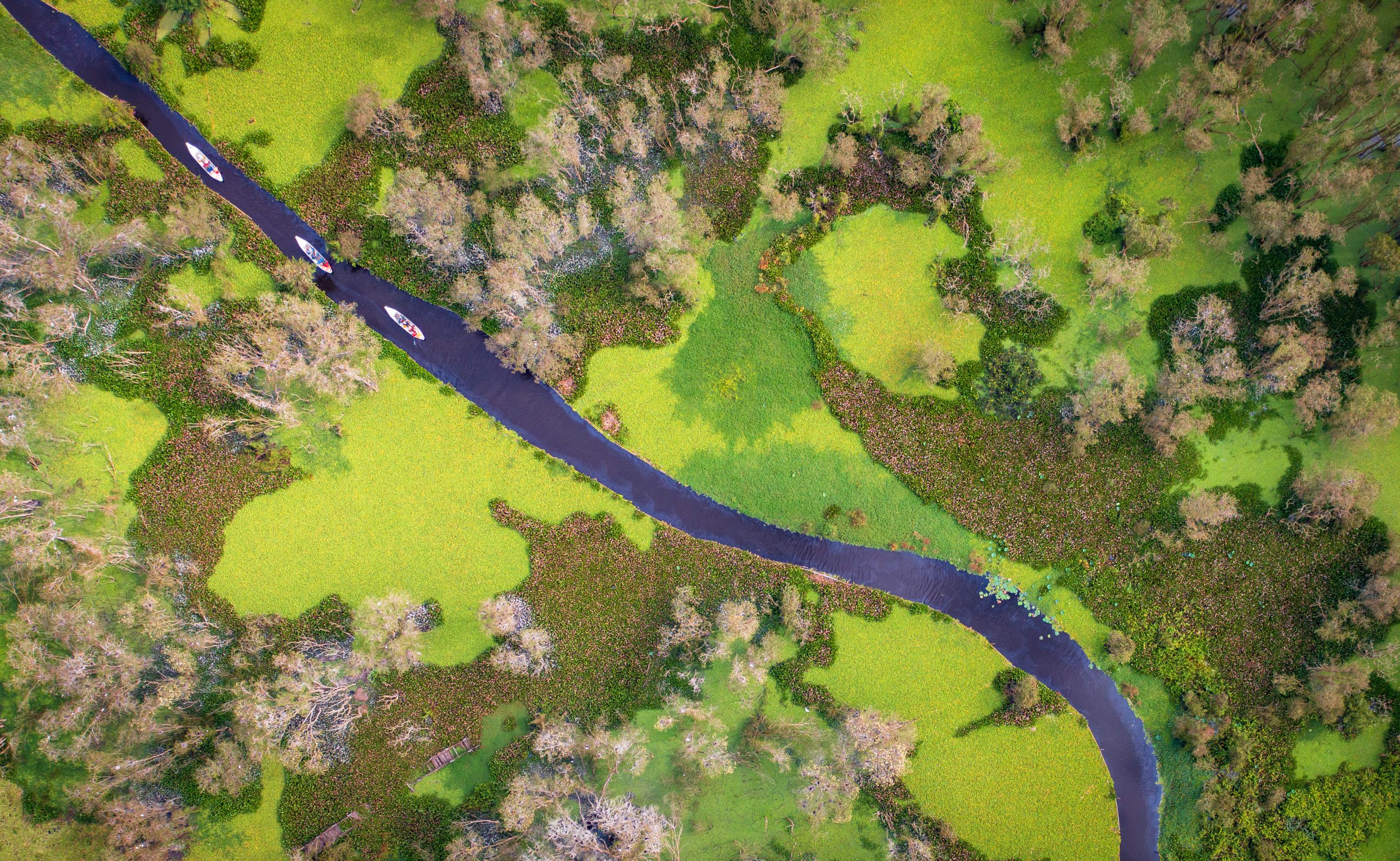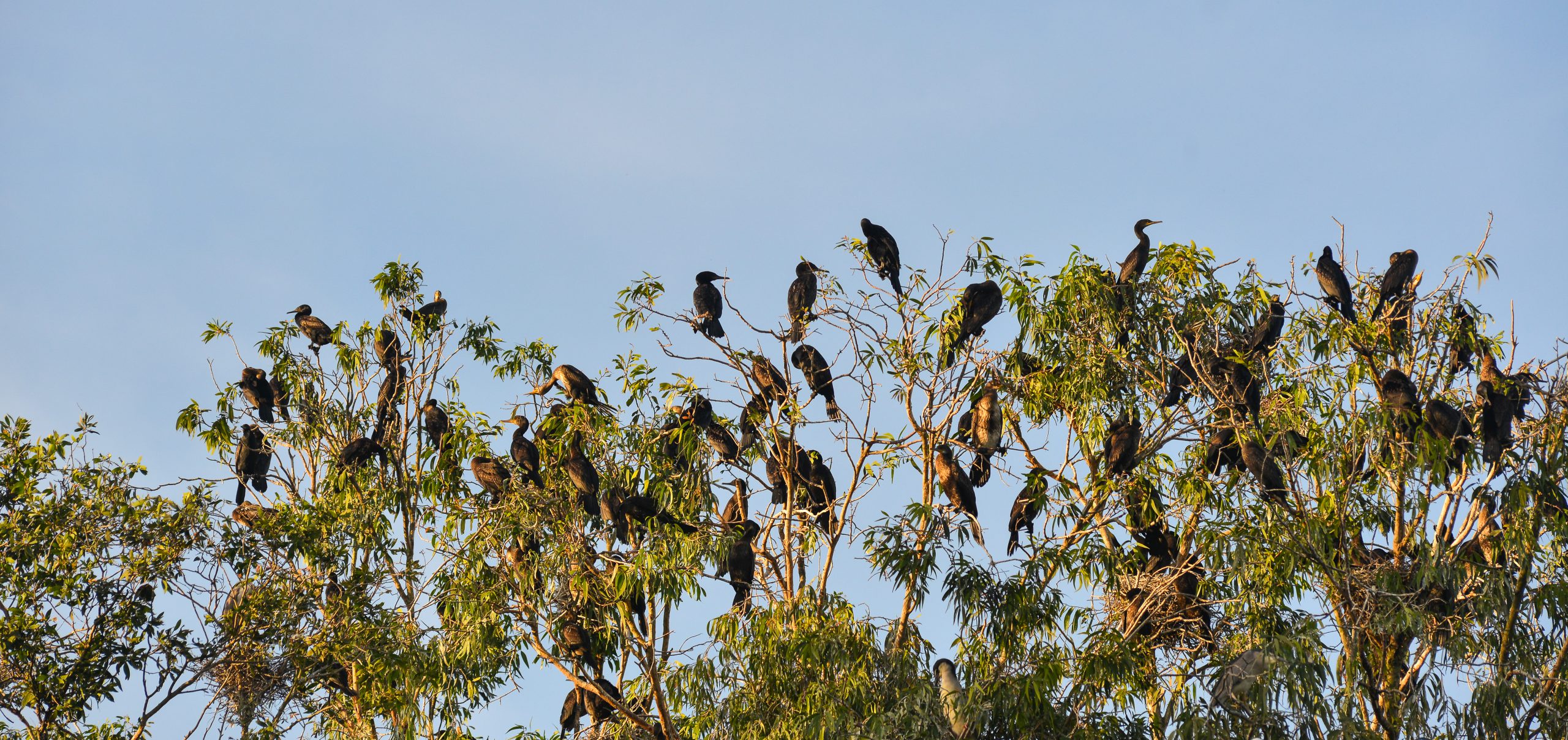Story: Phuong Nguyen
Photos: Thai Viet Hoan
Get back to nature in the Tra Su melaleuca forest.

Amidst an expanse of straight rice fields in the Long Xuyen Quadrangle, surrounded by canals rich in alluvium in one of the most prosperous downstream regions in the Mekong Delta, the Tra Su melaleuca forest emerges like a precious gem. Tra Su serves as an exemplary model of the successful integration of natural conservation and sustainable tourism development.
I have visited the Tra Su melaleuca forest several times, at different times of the year. In each season, the forest displays a different and captivating charm. With its vast rice fields, the Southwest is particularly beautiful during the flooding season between September and November. The surrounding fields are submerged in floodwater, which brings an abundant supply of alluvium from the upper reaches of the Mekong River. At this time, Tra Su appears like a floating lush green oasis when viewed from a distance.
Alternatively, if travelers visit Tra Su around Tet, during the last month of the lunar year, they may witness the seasonal movement of migratory birds. Lucky visitors may spy flocks of painted storks flying past or perching over an area of hundreds of square meters. In the summer, when rain showers pour over the delta and the rice fields are almost ready to harvest, Tra Su has a new look, with water mimosa and clusters of lotus blossoms scattered throughout the forest, creating a vibrant spectacle.
When visiting Tra Su, I often share a cup of tea or rice wine with the people who work for the forest’s management board while hearing their stories of discovering exotic animals and birds. The diversity and richness of species found in the melaleuca forest draw biologists who regularly conduct research here. At present, over 70 bird species, about 15 bat species, 25 frog species, and notably, 140 fish species have been recorded in Tra Su, including 13 fish species that only appear during the flooding season.
The Tra Su melaleuca forest is at its most enchanting when the sunlight gradually fades, and gentle twilight descends upon the melaleuca canopies. At this hour, flocks of birds flutter back to their roosts. Vast flocks descend upon the area, filling the air with chirping calls and the fluttering of wings.

As dawn breaks, frogs playfully leap beneath the large lotus leaves and fish gently splash their tails in the water. During a boat ride around the lake, passing through straight and lush rows of melaleuca trees, sunlight filters through the leaves, and the scent of melaleuca flowers lingers in the air. The clear water is home to aquatic species and moss, creating a surprisingly tranquil space.
Sustainable ecotourism
There is something unexpected about Tra Su—it is an artificially cultivated forest, brought to life by the diligent hands of hardworking people inhabiting this once inhospitable land. Located around 10 kilometers from the Vietnam-Cambodia border, Tra Su now belongs to Tinh Bien district in An Giang province. In the early 1980s, this area was deserted and heavily contaminated with salinity, making it impossible to grow any plants or raise animals. Through the efforts of local authorities and locals’ hard work, a project to combat salinity, facilitate afforestation, and prevent floods was established. Thirty years later, Tra Su has been recognized as a special-use forest and a year-round wetland area representing the western region of the Hau River.
In addition to its rich ecological value, Tra Su boasts a unique culture of those living near the forest. Besides growing rice, locals engage in various traditional handicrafts such as silk weaving, distilling melaleuca oil, beekeeping for honey, and making palm sugar. Moreover, they showcase their traditional culinary skills, offering rustic dishes that delight travelers.
A combination of ecotourism and nature conservation has flourished in this area. Visitors will find a harmonious blend of diverse flora and fauna plus a unique local culture. It’s delightful to stroll through the cool green forest, admire the enchanting birds and fish, listen to the pure sounds of nature, and inhale the fragrant aroma of melaleuca trees and lotus blossoms. Afterward, tourists can sample specialties of the Mekong Delta region: water lily flowers braised in fish sauce, grilled snakehead fish, clay-roasted chicken, or rice wrapped in lotus leaves, accompanied by a glass of aromatic glutinous rice wine.
Thanks to effective conservation and successful tourism development, the Tra Su melaleuca forest model has become an example when policymakers discuss the promotion of ecotourism in the Mekong Delta region. In line with global environmental protection efforts, Vietnam needs integrated models that combine sustainable tourism practices with the expansion of ecosystems, foster the harmonious integration of humans with nature, cherish and preserve green spaces, and diversify flora and fauna species. This must be the true mission of the tourism industry in the future.










